*NURSING > NCLEX > MED SURG 206 Comprehensive Foundation NCLEX Questions And Answers( All Answers Are Correct)Score A+ (All)
MED SURG 206 Comprehensive Foundation NCLEX Questions And Answers( All Answers Are Correct)Score A+
Document Content and Description Below
Comprehensive Foundation NCLEX Question 1 100 / 100 pts The client with cellulitis of the lower leg has had cultures done on the affected area. The nurse reviewing the results of the culture repor t i... nterprets that which of the following organisms is not part of the normal flora of the skin? Staphylococcus epidermidis Correct! Escherichia coli Candida albicans Staphylococcus aureus Rationale: E. coli is normally found in the intestines and is a common source of infection of wounds and the urinary system. C. albicans, S. aureus, and S. epidermis are part of the normal flora of the skin. Test-Taking Strategy: To answer this question correctly, you must be familiar with the normal microorganisms that inhabit the skin. Note that the question asks for the organism that is not part of normal flora. Remember that E. coli is normally found in the intestines. Review basic skin structures if you had difficulty with this question. Question 2 100 / 100 pts The client has been diagnosed with paronychia. The nurse understands that this is a disorder of the: Pilosebaceous glands Correct! Nails Hair follicles Epithelial layer of skin Rationale: Paronychia is a fungal infection that is most often caused by Candida albicans. This results in inflammation of the nail fold, with separation of the fold from the nail plate. The area is generally tender to touch, with purulent drainage. Disorders of the hair follicles include folliculitis, furuncles, and carbuncles. Disorders of the pilosebaceous glands include acne vulgaris and seborrheic dermatitis. There are a variety of disorders involving the epithelial skin. Test-Taking Strategy: To answer this question accurately, you must be familiar with a variety of skin disorders and their causes. Remember that paronychia is a nail disorder. If this question was difficult, review the characteristics of paronychia. Question 3 100 / 100 pts The nurse is assigned to the care of a client scheduled for surgery for a right colon tumor. Which of the following is the most characteristic manifestation of cancer at this site? Correct! Dull abdominal pain exacerbated by walking Flat, ribbon-like stools Crampy gas pains Frequent diarrhea Rationale: Characteristic symptoms of right colon tumors include vague, dull, abdominal pain exacerbated by walking, and dark red- or mahogany-colored blood mixed in the stool. The symptoms described in the other options are associated with left colon tumors. Test-Taking Strategy: Knowledge regarding the signs of right and left colon tumors is required to answer this question. Note, however, that “crampy gas pains” and “dull abdominal pain exacerbated by walking” describe different patterns of pain. This may suggest to you that one of the two is correct. If you are not familiar with the differences between right and left colon tumors, review this content. Question 4 100 / 100 pts The client with an endocrine disorder complains of weight loss and diarrhea, and says that he can “feel his heart beating in his chest.” The nurse interprets that which of the following glands is most likely responsible for these symptoms? Parathyroid Pituitary Correct! Thyroid Adrenal cortex Rationale: The thyroid gland is responsible for a number of metabolic functions in the body, including metabolism of nutrients (such as fats and carbohydrates). Increased metabolic function places a demand on the cardiovascular system for a higher cardiac output. Thus, a client with increased activity of the thyroid gland exhibits weight loss from higher metabolic rate and increased pulse rate. Test-Taking Strategy: Use knowledge of the function of the thyroid gland to answer this question. Remember that the thyroid gland is responsible for metabolic function. This will assist in directing you to “thyroid.” If you had difficulty answering this question, review the function of the thyroid gland. Question 5 100 / 100 pts The client with diabetes mellitus is being tested to determine long-term diabetic control. Which of the following results would the nurse expect to see if the client’s long-term control is within acceptable limits? Fasting blood glucose level of 150 mg/dL Correct! Glycosylated hemoglobin of 6% Presence of albumin in the urine Presence of ketones in the urine Rationale: This measurement of glycosylated hemoglobin (Hb A1c) detects glucose binding on the red blood cell (RBC) membrane and is expressed as a percentage. It measures glucose for the life of the RBC, which is 120 days. The fasting blood glucose level should be lower than 130 mg/dL. The urine should be free of both ketones and urine. Test-Taking Strategy: Specific knowledge of the effects of an increased blood glucose level in the body is necessary to answer this question. Noting the words “long-term” will direct you to “glycosylated hemoglobin of 6%.” Review the alterations in normal physiology that occur with diabetes mellitus if you had difficulty with this question. Question 6 100 / 100 pts Discharge teaching for a client recovering from an attack of chronic pancreatitis should include which of the following instructions? Diet should be high in carbohydrates, fats, and proteins. Frothy fatty stools indicate that enzyme replacement is working. Alcohol should be consumed in moderation. Correct! Avoid caffeine, because it may aggravate symptoms. Rationale: Knowing that caffeinated beverages, such as coffee, tea, and soda, will worsen symptoms, such as pain, will direct you to select “Avoid caffeine, because it may aggravate symptoms.” Alcohol can precipitate an attack of chronic pancreatitis and needs to be avoided. The recommended diet is moderate carbohydrates, low fat, and high protein. Frothy fatty stools indicate that the replacement enzyme dose needs to be increased. Test-Taking Strategy: “Alcohol should be consumed in moderation” can be immediately eliminated because alcohol can precipitate another attack and needs to be avoided. “Diet should be high in carbohydrates, fats, and proteins” can be eliminated because the recommended diet is moderate carbohydrates, low fat, and high protein. Finally, frothy fatty stools indicate that the enzyme dose needs to be increased, so “frothy fatty stools indicate that enzyme replacement is working” can be eliminated. Review home care instructions for the client with chronic pancreatitis if you had difficulty answering this question. [Show More]
Last updated: 2 years ago
Preview 1 out of 119 pages

Buy this document to get the full access instantly
Instant Download Access after purchase
Buy NowInstant download
We Accept:

Reviews( 0 )
$15.50
Can't find what you want? Try our AI powered Search
Document information
Connected school, study & course
About the document
Uploaded On
Mar 15, 2022
Number of pages
119
Written in
Additional information
This document has been written for:
Uploaded
Mar 15, 2022
Downloads
0
Views
107





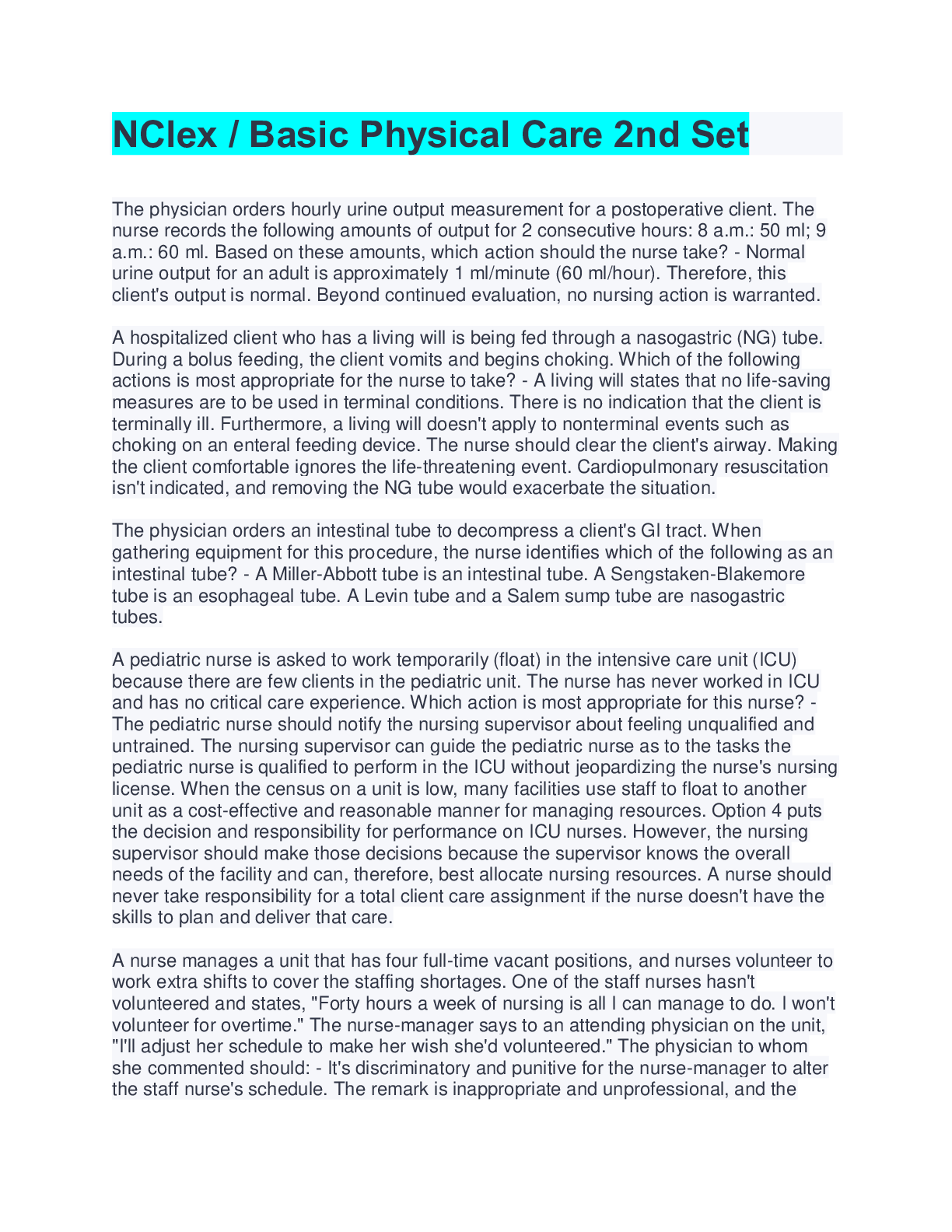
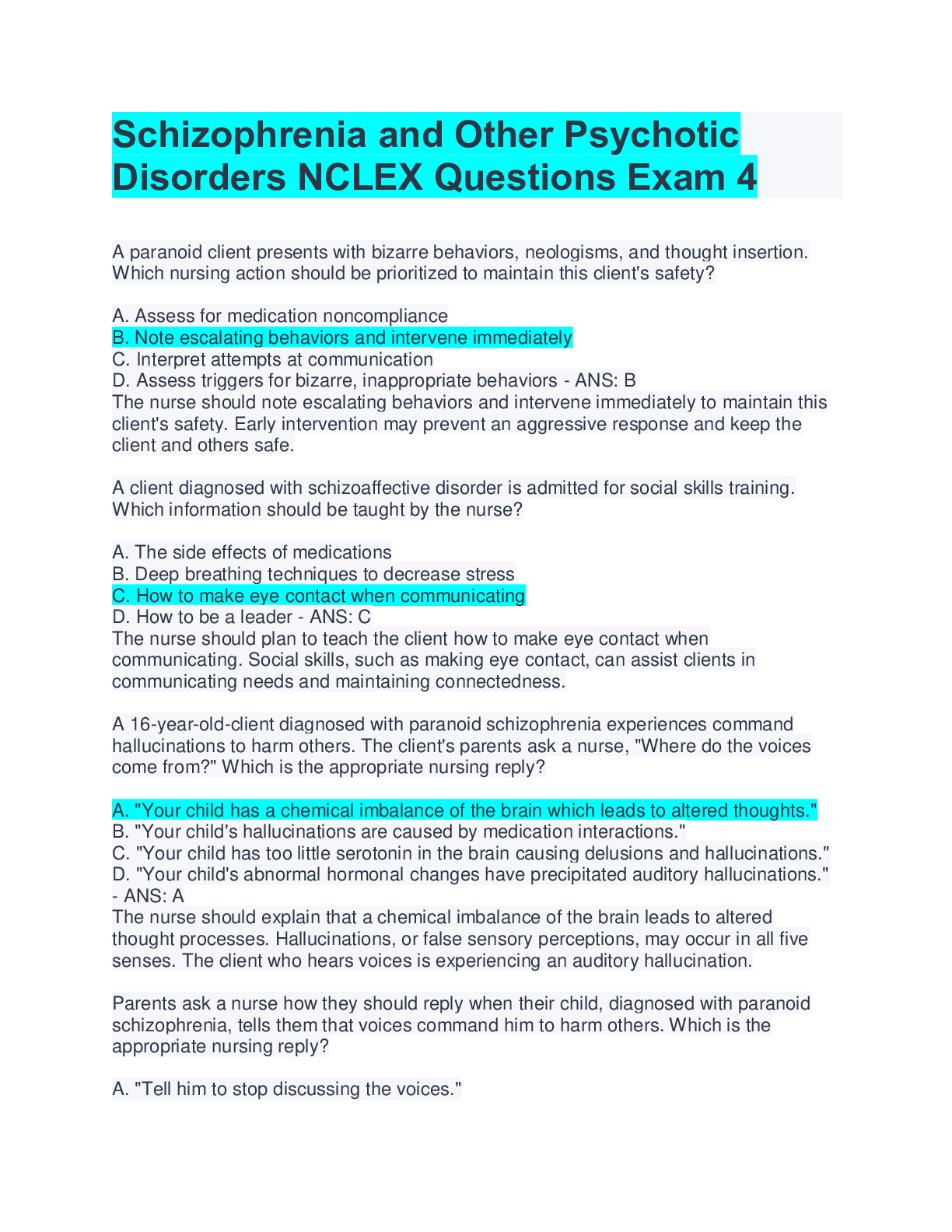

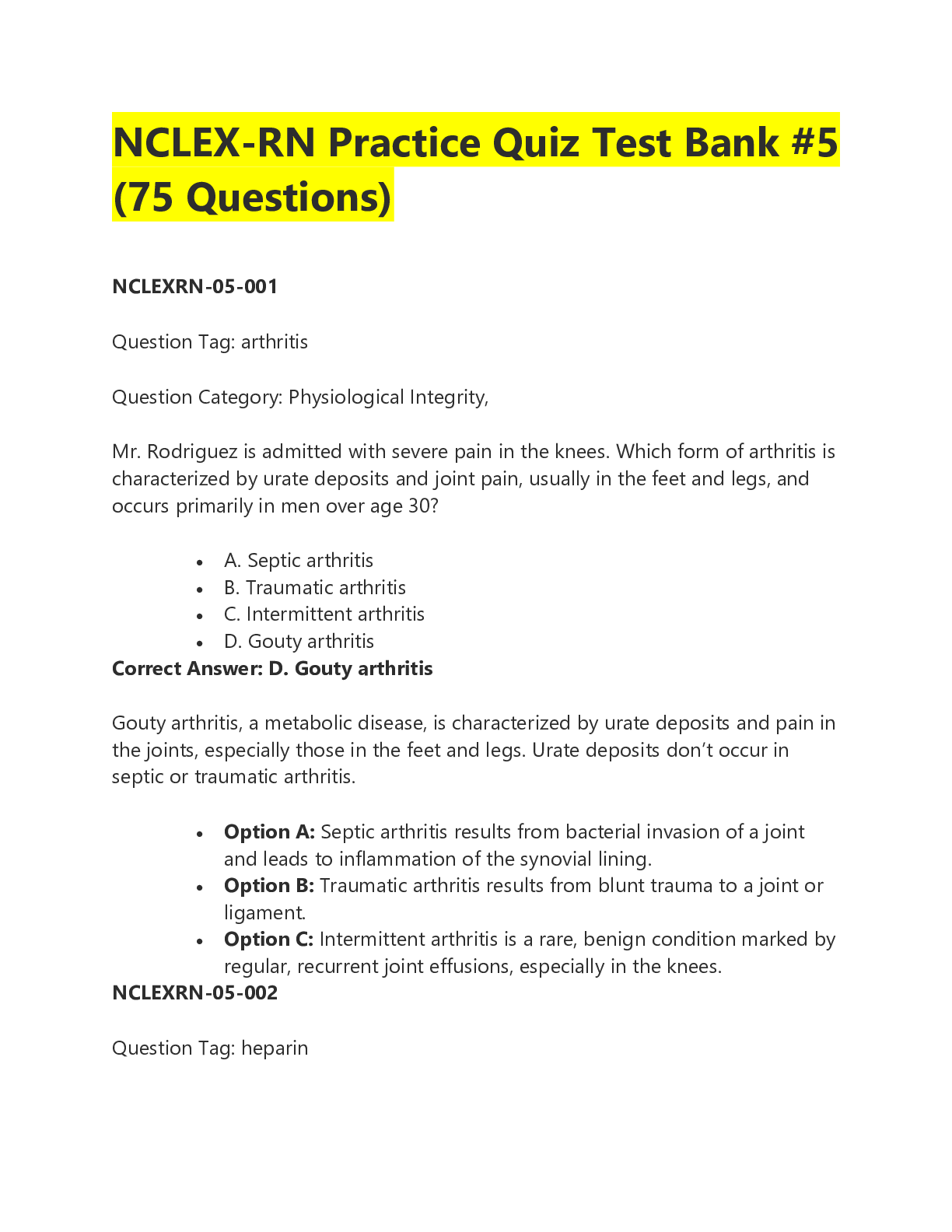

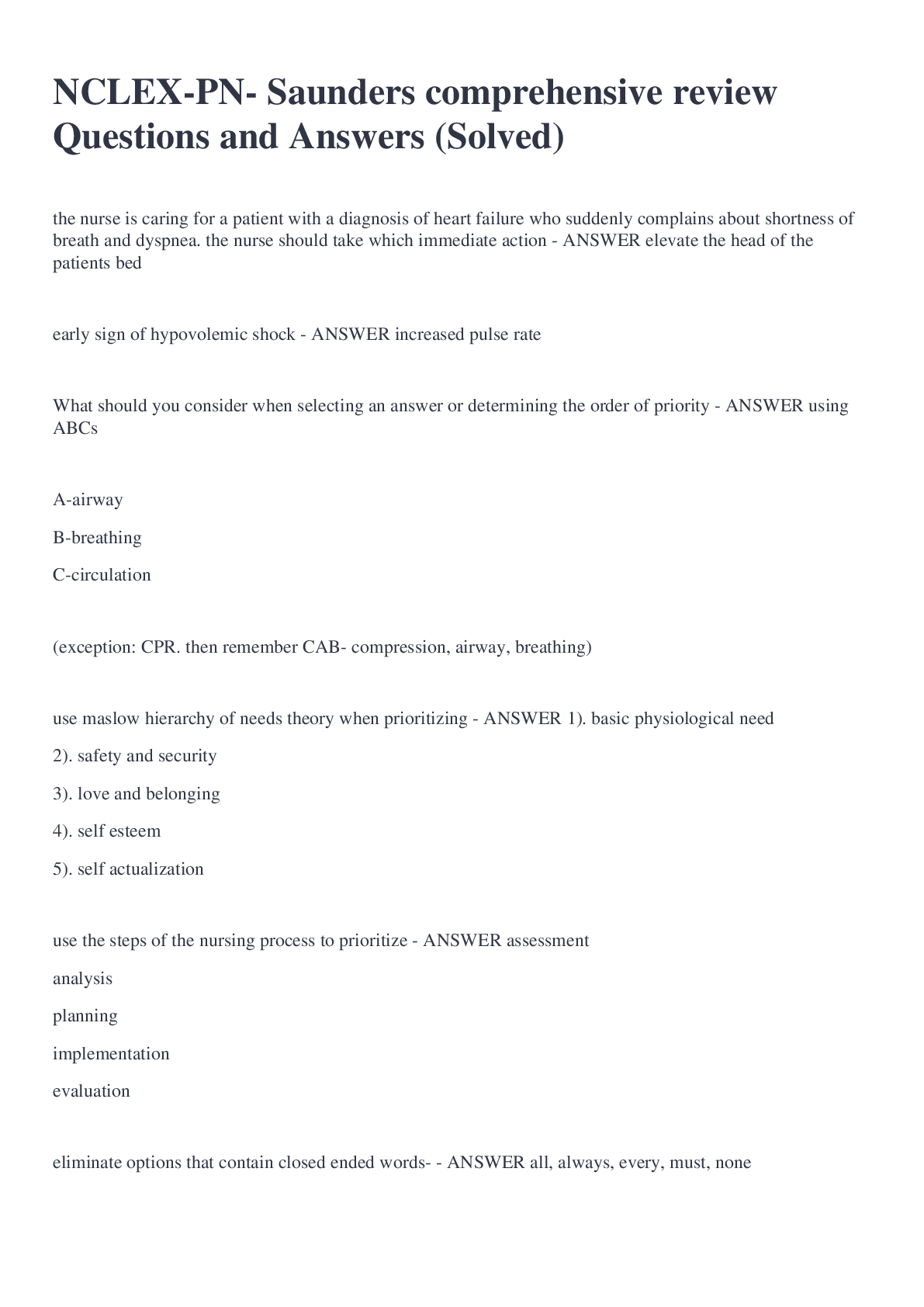

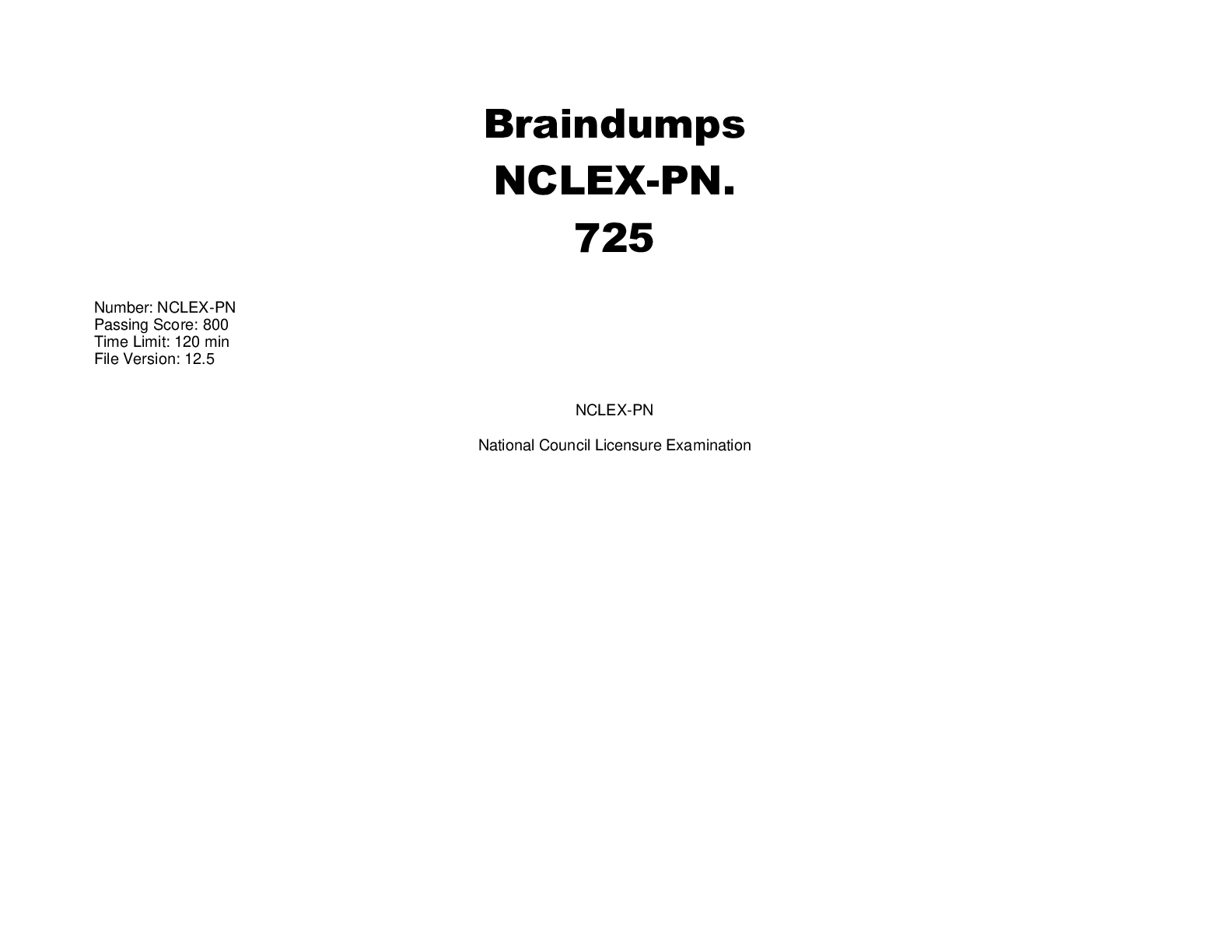


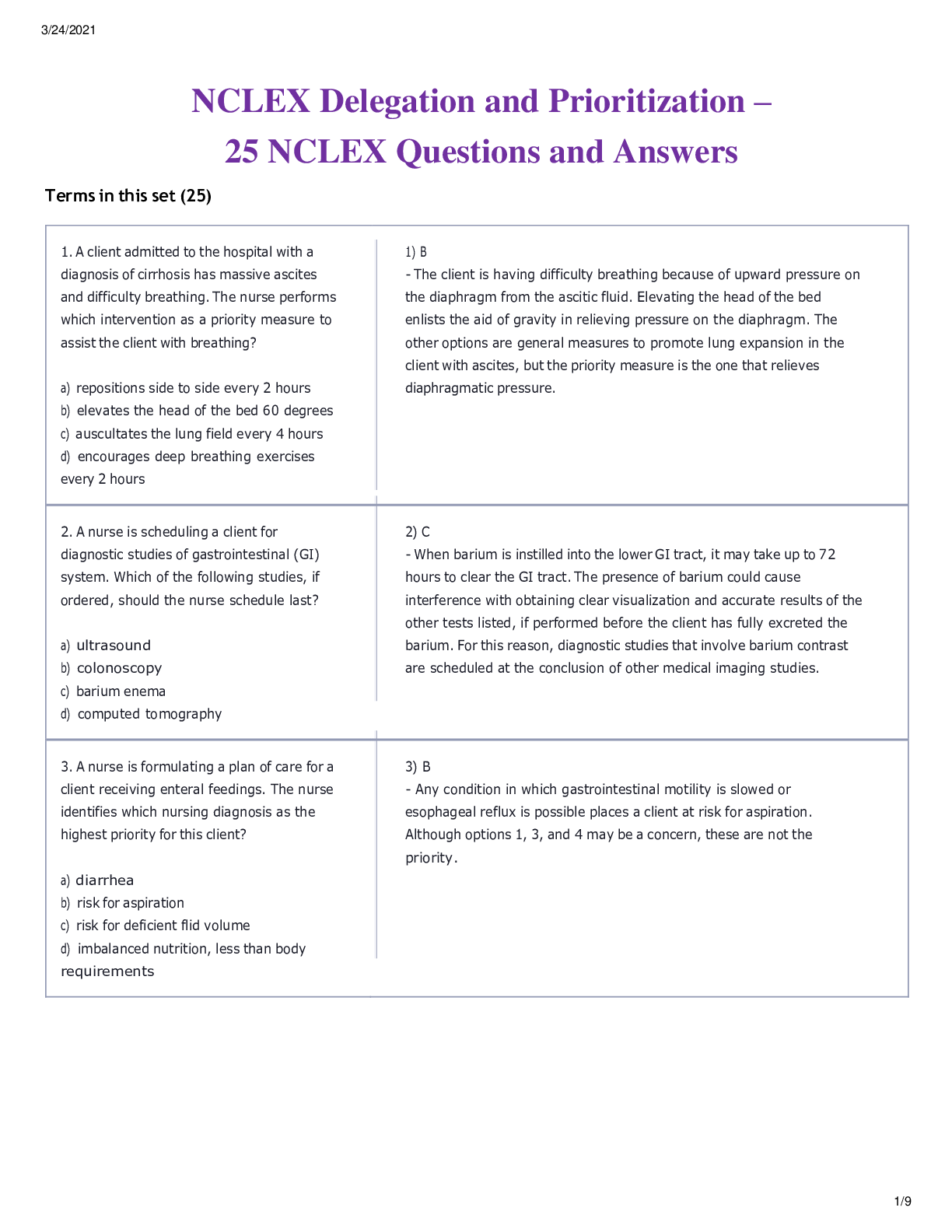




BURN’S PEDIATRIC PRIMARY CARE NCLEX.png)
BURN’S PEDIATRIC PRIMARY CARE NCLEX.png)


